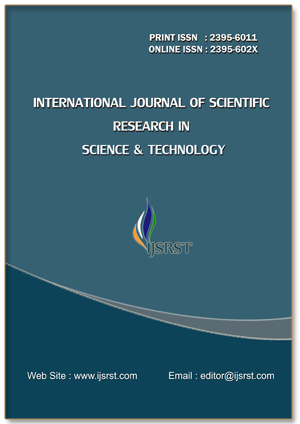Ecology and Breeding Behaviour of Black-Winged Stilt (Himantopus Himantopus Linn) In Abhera Wetland of Kota District, Rajasthan
Keywords:
Breeding, ecology, nesting, population, threatsAbstract
Forests, meadows, wetlands, and deserts are just a few of the diverse environments where birds can be found. The connection between habitat and bird variety has been the subject of numerous studies. Ducks, geese, and swans are among the waterbirds that depend on wetlands as their home. Waterbirds can find food, refuge, and breeding places in wetlands. Understanding the life history and reproductive tactics of different bird species requires a thorough understanding of avian breeding biology. Because of its distinctive behaviors and adaptations throughout the breeding process, the Black-winged Stilt (Himantopus himantopus) stands out among these species as an interesting subject. A thorough grasp of the reproductive behaviors of the Blackwinged Stilt and the variables affecting nest site selection, courtship, incubation, hatching, parental care, and fledgling care can be obtained by incorporating results from several studies into each area of the breeding ecology. According to this study, environmental conditions can affect the nest architecture, with stilts modifying their patterns to maximize temperature regulation and shield eggs from predators.
📊 Article Downloads
References
Acharya, P., & Singh, P. (2014). Population and habitat evaluation of wetland birds in Assam and West Bengal states of India. Journal of Environmental Biology, 35(4), 725-734.
Choudhury, S., Das, D., & Nandy, S. (2020). Habitat preference and seasonal abundance of black-winged stilt Himantopus himantopus in the coastal wetlands of Sundarban, India. Indian Journal of Ecology, 47(3), 552-557.
Crochet, P.-A., Fuchs, J., & Bertrand, J. A. M. (2002). Molecular phylogeny and plumage evolution in the genus Himantopus (Aves: Charadriiformes). Molecular Phylogenetics and Evolution, 23(1), 139-153. doi: 10.1016/s1055-7903(02)00009-4
Das, A. K., Satpathy, K. K., & Pattanaik, A. K. (2019). Study of the breeding biology and conservation of the Black-winged Stilt (Himantopus himantopus) in Chilika Lagoon, Odisha, India. Indian Birds, 15(5), 128- 132.
Huang, Q., Zou, F., & Xu, G. (2016). Seasonal and habitat variation in feeding ecology of the Black-winged Stilt (Himantopus himantopus) in Chinese wetlands. Journal of Ornithology, 157(3), 853-862.
Kumar, A., & Kumar, A. (2014). Distribution and habitat preference of Blackwinged Stilt Himantopus himantopus (Linnaeus, 1758) in India. Indian Journal of Animal Research, 48(6), 592-596.
Kumar, A., Narwade, S. S., & Padate, G. S. (2020). Habitat use by breeding and wintering waterbirds in a shallow lake in Central India. Tropical Ecology, 61(2), 183-190.
Laurent, P., & Laffitte, R. (1993). Biologie et écologie alimentaire de l'Himantopus himantopus (Linnaeus, 1758) (Aves: Recurvirostridae) dans la Camargue (sud de la France). Bulletin de la Société Zoologique de France, 118(2), 143-156.
Matthews, J. W., & Endress, B. A. (Eds.). (2017). Wetland Landscape Characterization: Practical Tools, Methods, and Approaches for Landscape Ecology. Springer.
Mccabe, J. T., Baker, J., & Maron, M. (2018). Can conservation efforts on public land offset the negative impacts of climate change on a flagship bird species?. Landscape Ecology, 33(4), 569-584.
Mishra, S., Sharma, P., & Goyal, S. P. (2019). Status, distribution and conservation of Black-winged Stilt (Himantopus himantopus) in Rajasthan, India. Journal of Biodiversity and Environmental Sciences, 14(5), 89-95.
Niamir, A. (Ed.). (2017). Habitat Fragmentation: A Comprehensive Review. Nova Science Publishers.
Ostrom, E. (2015). Governing the Commons: The Evolution of Institutions for Collective Action. Cambridge University Press.
Pimm, S. L., Jenkins, C. N., & Li, B. V. (2018). How to Protect Half of Earth to Ensure it Protects Sufficient Biodiversity. Science Advances, 4(8), eaat2616.
Poggio, L., Giménez, R., & Brown, A. D. (Eds.). (2017). Remote Sensing of Planet Earth. IntechOpen.
Downloads
Published
Issue
Section
License
Copyright (c) 2025 International Journal of Scientific Research in Science and Technology

This work is licensed under a Creative Commons Attribution 4.0 International License.
https://creativecommons.org/licenses/by/4.0




